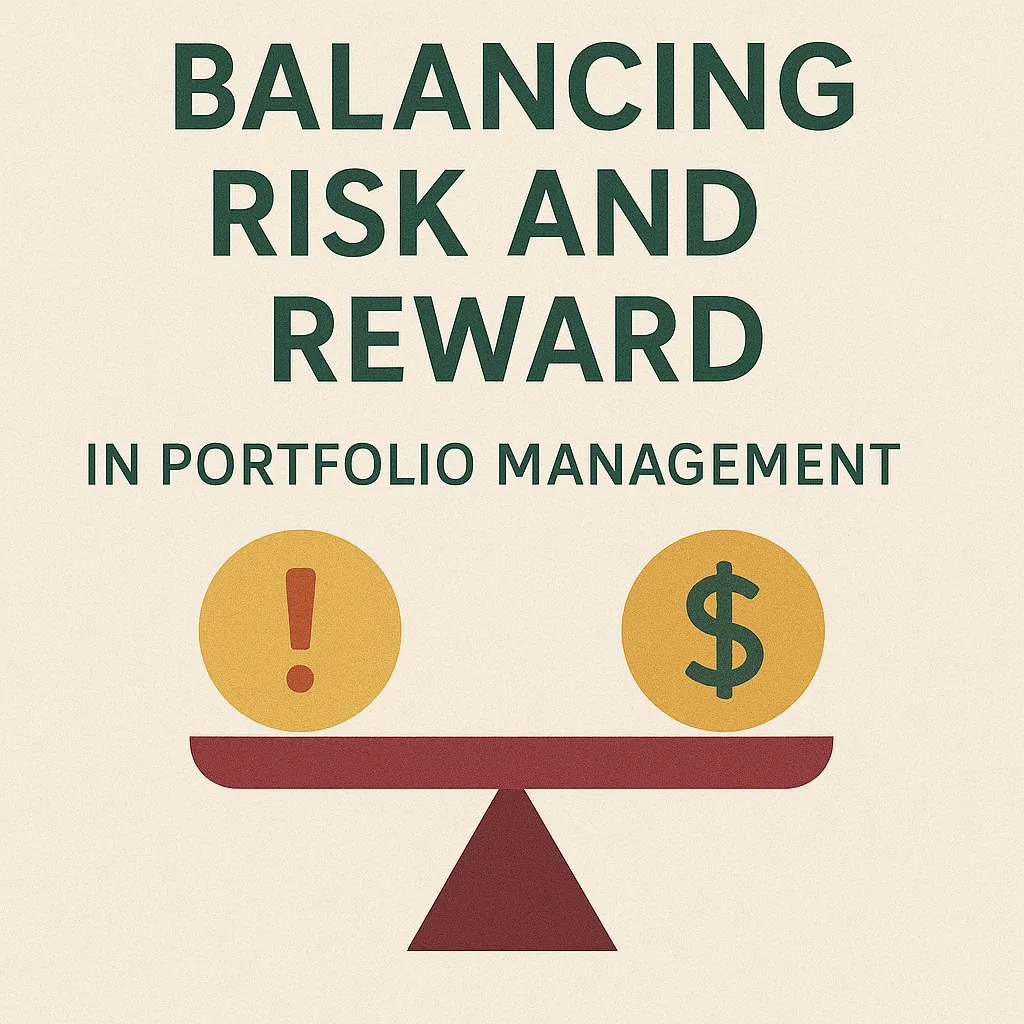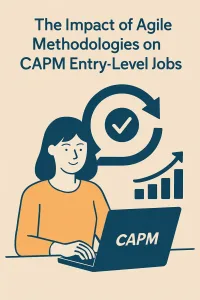Introduction to Portfolio Management
Portfolio management serves as a critical framework that enables organizations to align their projects with strategic objectives while effectively managing resources and risks.
Definition of Portfolio Management
Portfolio management is defined as the centralized management of one or more portfolios, which includes the processes, methods, and tools used to manage and coordinate projects and programs. Its significance lies in its ability to ensure that an organization’s projects are not only aligned with its strategic goals but also optimized for resource allocation and risk management. By overseeing a collection of projects, portfolio management helps organizations prioritize initiatives, balance competing demands, and maximize the value delivered to stakeholders.
Relationship Between Strategy and Portfolio Management
The relationship between strategy and portfolio management is inherently intertwined. A well-defined strategy provides the foundation upon which portfolio decisions are made. Portfolio management translates strategic objectives into actionable projects, ensuring that resources are allocated to initiatives that support the organization’s long-term vision. This alignment is crucial, as it allows organizations to respond to changing market conditions and internal capabilities while maintaining focus on their strategic goals. Effective portfolio management thus acts as a bridge between high-level strategy and day-to-day project execution, facilitating informed decision-making and prioritization.
Understanding Risk and Reward in Portfolio Contexts
In the context of portfolio management, the concepts of risk and reward are fundamental. Every project carries inherent risks, which can stem from various sources such as market volatility, resource availability, and technological changes. Understanding these risks is essential for project portfolio managers, as it enables them to make informed decisions about which projects to pursue, defer, or terminate.
The balance of risk and reward is a critical aspect of portfolio strategy. Managers must evaluate potential returns against the risks involved, ensuring that the overall portfolio remains aligned with the organization’s risk appetite and strategic objectives. By employing risk management techniques, such as risk assessment and mitigation strategies, portfolio managers can enhance the likelihood of achieving desired outcomes while minimizing potential downsides. This proactive approach not only safeguards the organization’s investments but also fosters a culture of informed risk-taking that can lead to innovative solutions and competitive advantages.
The Importance of Strategy in Portfolio Management
Particularly in portfolio management, the concept of strategic alignment is paramount. It serves as the foundation upon which successful portfolio decisions are made, ensuring that projects not only contribute to immediate goals but also align with the broader organizational objectives. Here’s a closer look at the significance of strategic alignment in portfolio management, its impact on project selection and prioritization, and the potential pitfalls of neglecting this critical aspect.
Understanding Strategic Alignment
Strategic alignment refers to the process of ensuring that an organization’s projects and initiatives are in sync with its overarching goals and strategies. This alignment is crucial for several reasons:
- Resource Optimization: When projects are aligned with strategic objectives, resources can be allocated more effectively, minimizing waste and maximizing returns. This ensures that the organization invests in initiatives that truly matter, rather than spreading resources too thin across unrelated projects.
- Enhanced Decision-Making: A clear strategic framework provides a basis for evaluating project proposals. It allows project portfolio managers to assess potential projects against strategic goals, leading to more informed and effective decision-making.
- Increased Stakeholder Buy-In: Projects that are clearly aligned with strategic objectives are more likely to gain support from stakeholders. This buy-in is essential for securing necessary resources and commitment throughout the project lifecycle.
Consequences of Neglecting Strategic Alignment
Failing to maintain strategic alignment can have serious repercussions for organizations:
- Misallocation of Resources: Without a clear strategy, organizations may invest in projects that do not contribute to their goals, leading to wasted resources and missed opportunities.
- Decreased Project Success Rates: Projects that lack alignment with strategic objectives are often less likely to succeed. They may face challenges in securing stakeholder support, leading to delays and increased costs.
- Loss of Competitive Advantage: Organizations that do not align their projects with strategic goals risk falling behind competitors who effectively leverage their resources to pursue initiatives that drive growth and innovation.
Understanding Risk in Portfolio Management
Understanding risk is crucial for effective decision-making. Risk in this context refers to the potential for loss or negative outcomes that can arise from various uncertainties associated with project portfolios. Here, we will explore the different types of risks, the importance of early risk identification and assessment, and an overview of common risk management frameworks and methodologies.
Types of Risks Associated with Project Portfolios
- Financial Risks: These risks pertain to the potential for financial loss due to factors such as budget overruns, funding shortages, or changes in market conditions. Financial risks can significantly impact the viability of projects within a portfolio and must be closely monitored.
- Operational Risks: These involve risks arising from internal processes, systems, or human factors that can affect project execution. Operational risks may include resource allocation issues, project delays, or failures in communication among team members.
- Strategic Risks: These risks relate to the alignment of projects with the overall strategic goals of the organization. If a project does not align with the strategic direction, it may lead to wasted resources and missed opportunities. Strategic risks can also arise from changes in the competitive landscape or shifts in market demand.
- Compliance Risks: These involve the potential for legal or regulatory penalties due to non-compliance with laws, regulations, or standards. Ensuring that projects adhere to relevant compliance requirements is essential to mitigate these risks.
- Reputational Risks: These risks can affect an organization’s reputation and stakeholder trust. Poor project outcomes or failures can lead to negative perceptions, impacting future opportunities and stakeholder relationships.
Importance of Identifying and Assessing Risks Early
Identifying and assessing risks early in the portfolio management process is vital for several reasons:
- Informed Decision-Making: Early risk identification allows project portfolio managers to make informed decisions regarding project selection, prioritization, and resource allocation. Understanding potential risks enables managers to weigh the benefits against the risks effectively.
- Proactive Mitigation: By recognizing risks at the outset, organizations can develop proactive strategies to mitigate them. This may involve adjusting project plans, reallocating resources, or implementing contingency measures to address potential issues before they escalate.
- Enhanced Stakeholder Confidence: Demonstrating a thorough understanding of risks and a commitment to managing them can enhance stakeholder confidence. Stakeholders are more likely to support projects that have a clear risk management strategy in place.
Overview of Common Risk Management Frameworks and Methodologies
Several frameworks and methodologies can guide organizations in managing risks within project portfolios:
- PMBOK Guide: The Project Management Body of Knowledge (PMBOK) provides a comprehensive framework for project management, including risk management processes. It emphasizes the importance of risk identification, qualitative and quantitative risk analysis, and risk response planning.
- ISO 31000: This international standard offers guidelines for risk management that can be applied across various sectors. It emphasizes the need for a structured approach to risk management, integrating it into the organization’s governance and decision-making processes.
- Risk Management Framework (RMF): Developed by the National Institute of Standards and Technology (NIST), the RMF provides a structured process for managing risks related to information systems. While primarily focused on cybersecurity, its principles can be adapted for broader project portfolio risk management.
- Agile Risk Management: In agile project management, risk management is an ongoing process that involves continuous assessment and adaptation. Agile methodologies encourage teams to identify risks iteratively and respond to them in real-time, fostering a dynamic approach to risk management.
- Risk Assessment Matrix: This tool helps project managers evaluate risks based on their likelihood and impact. By categorizing risks into different levels of severity, managers can prioritize their responses and allocate resources effectively.
Risk Assessment Techniques for Portfolio Managers
Balancing risk and reward is crucial for achieving strategic objectives. Effective risk assessment techniques enable portfolio managers to identify, analyze, and mitigate risks, ensuring that projects align with organizational goals while maximizing returns. This section delves into qualitative and quantitative risk assessment methods, tools that facilitate these assessments, and real-world examples that highlight successful risk management practices.
Introduction to Qualitative and Quantitative Risk Assessment Methods
- Qualitative Risk Assessment:
- Definition: This method involves subjective evaluation of risks based on their likelihood and impact. It often utilizes expert judgment and stakeholder input.
- Techniques:
- Risk Categorization: Grouping risks into categories (e.g., technical, financial, operational) to streamline analysis.
- Risk Probability and Impact Matrix: A visual tool that helps prioritize risks based on their potential impact and likelihood of occurrence.
- Advantages: Quick to implement and useful for initial risk identification, especially in the early stages of project planning.
- Quantitative Risk Assessment:
- Definition: This approach uses numerical data and statistical methods to evaluate risks, providing a more objective analysis.
- Techniques:
- Monte Carlo Simulations: A computational algorithm that uses random sampling to estimate the probability of different outcomes in a project.
- Expected Monetary Value (EMV): A calculation that helps in determining the average outcome when the future includes scenarios that may or may not happen.
- Advantages: Offers a detailed analysis of potential risks and their financial implications, aiding in informed decision-making.
Tools and Software for Risk Assessment
To effectively implement risk assessment techniques, portfolio managers can leverage various tools and software designed to streamline the process:
- Risk Matrices: These visual tools help in categorizing and prioritizing risks based on their severity and likelihood, making it easier to communicate risk levels to stakeholders.
- Project Management Software: Tools like Microsoft Project, Primavera, and Jira often include built-in risk management features that allow for tracking and reporting on identified risks.
- Specialized Risk Management Software: Applications such as RiskWatch and @RISK provide advanced functionalities for conducting quantitative analyses, including simulations and scenario planning.
- Dashboards and Reporting Tools: These tools help visualize risk data, making it easier for portfolio managers to monitor risk levels and communicate findings to stakeholders.
Balancing Risk and Reward: Making Informed Decisions
The delicate balance between risk and reward is crucial for achieving strategic objectives. Risk managers and project portfolio managers must navigate this landscape with a clear understanding of risk management principles to make informed decisions that enhance portfolio performance. Here are key strategies and concepts to consider:
Strategies for Risk Mitigation
- Diversification: One of the most effective strategies for mitigating risk is diversification. By spreading investments across various projects, sectors, or geographical areas, managers can reduce the impact of any single project’s failure on the overall portfolio. This approach not only minimizes risk but can also enhance overall performance by capturing opportunities in different markets.
- Regular Risk Assessment: Implementing a systematic approach to regularly assess risks associated with each project is vital. This includes identifying potential risks, analyzing their impact, and developing response strategies. Tools such as SWOT analysis (Strengths, Weaknesses, Opportunities, Threats) can help in understanding the risk landscape and making proactive adjustments to the portfolio.
- Scenario Planning: Engaging in scenario planning allows managers to anticipate potential future events and their impacts on the portfolio. By considering various scenarios, including worst-case situations, managers can develop contingency plans that prepare the organization to respond effectively to unforeseen challenges.
- Stakeholder Engagement: Involving stakeholders in the risk management process can provide valuable insights and foster a culture of risk awareness. Regular communication with stakeholders helps in identifying risks early and aligning the portfolio strategy with organizational goals.
Understanding Risk Tolerance
The concept of risk tolerance is fundamental in decision-making for portfolio management. Risk tolerance refers to the degree of variability in investment returns that an organization is willing to withstand. Understanding this concept is essential for several reasons:
- Alignment with Organizational Goals: Risk tolerance should align with the organization’s overall strategic objectives. A clear understanding of risk appetite helps in selecting projects that fit within acceptable risk levels, ensuring that the portfolio supports long-term goals.
- Informed Decision-Making: Knowing the organization’s risk tolerance enables managers to make informed decisions about which projects to pursue or abandon. It helps in prioritizing projects that offer the best potential rewards relative to the risks involved.
- Communication and Buy-In: Clearly defining risk tolerance facilitates better communication with stakeholders, ensuring that everyone is on the same page regarding acceptable risks. This alignment is crucial for gaining buy-in for portfolio decisions.
Frameworks for Evaluating Rewards Against Risks
To effectively balance risk and reward, project portfolio managers can utilize various frameworks that facilitate the evaluation of potential rewards against identified risks:
- Risk-Reward Matrix: This tool allows managers to plot projects based on their potential rewards and associated risks. By visualizing the relationship between risk and reward, managers can prioritize projects that offer the best risk-adjusted returns.
- Cost-Benefit Analysis: Conducting a cost-benefit analysis helps in quantifying the expected benefits of a project against its costs and risks. This analysis provides a clear picture of whether the potential rewards justify the risks involved.
- Monte Carlo Simulation: This statistical technique enables managers to model the probability of different outcomes in a project. By simulating various scenarios, managers can better understand the range of potential rewards and the associated risks, leading to more informed decision-making.
- Balanced Scorecard: Utilizing a balanced scorecard approach allows managers to evaluate projects not only on financial metrics but also on strategic alignment, customer satisfaction, and operational efficiency. This holistic view helps in assessing the overall value of projects in the portfolio.
Future Trends in Risk Management for Portfolio Managers
In the ever-evolving landscape of project management, particularly in portfolio management, understanding and managing risk is paramount. As we look to the future, several emerging trends and technologies are set to reshape how risk managers and project portfolio managers approach risk assessment and management. Here are some key points to consider:
1. The Role of Artificial Intelligence and Big Data in Risk Assessment and Management
- Enhanced Data Analysis: Artificial intelligence (AI) and big data analytics are revolutionizing risk management by enabling portfolio managers to analyze vast amounts of data quickly and accurately. These technologies can identify patterns and trends that may not be immediately apparent, allowing for more informed decision-making.
- Predictive Analytics: AI-driven predictive analytics can forecast potential risks by analyzing historical data and current market conditions. This capability allows portfolio managers to anticipate challenges and devise strategies to mitigate them before they escalate.
- Automated Risk Monitoring: With the integration of AI, portfolio managers can implement automated systems that continuously monitor risk factors. This real-time analysis helps in promptly addressing emerging risks, thereby enhancing the overall resilience of the portfolio.
2. Predictions for Future Risks and How Portfolio Managers Can Prepare
- Evolving Market Dynamics: As global markets become increasingly interconnected, portfolio managers must be vigilant about geopolitical risks, economic fluctuations, and regulatory changes. Understanding these dynamics will be crucial for anticipating future risks.
- Technological Disruptions: The rapid pace of technological advancement poses both opportunities and threats. Portfolio managers should stay informed about emerging technologies that could disrupt their industries and assess how these changes might impact their portfolios.
- Environmental and Social Risks: With growing awareness of climate change and social responsibility, portfolio managers need to consider environmental, social, and governance (ESG) factors in their risk assessments. Preparing for these risks involves integrating sustainability into portfolio strategies and ensuring compliance with evolving regulations.
3. Importance of Adaptability and Continuous Learning in Risk Management Strategies
- Agile Methodologies: The ability to adapt quickly to changing circumstances is essential for effective risk management. Portfolio managers should embrace agile methodologies that allow for flexibility in strategy and execution, enabling them to respond to unforeseen challenges.
- Continuous Learning and Development: As the risk landscape evolves, so too must the skills and knowledge of risk managers. Engaging in continuous professional development, attending workshops, and participating in industry forums can help portfolio managers stay ahead of emerging trends and best practices.
- Collaborative Approaches: Fostering a culture of collaboration within teams can enhance risk management efforts. By sharing insights and experiences, portfolio managers can develop more comprehensive strategies that address a wider range of potential risks.
Conclusion
The delicate balance between risk and reward is paramount. As organizations strive to achieve their strategic objectives, understanding and managing risks effectively becomes a critical component of successful portfolio management. Here are the key insights to consider:
- Balancing Risk and Reward: The essence of portfolio management lies in the ability to identify, assess, and mitigate risks while simultaneously pursuing opportunities that promise substantial rewards. A well-structured portfolio not only maximizes returns but also minimizes potential losses, ensuring that organizations can navigate uncertainties with confidence.
- Strategic Alignment: It is essential for portfolio managers to ensure that their projects align with the broader organizational strategy. This alignment not only enhances the likelihood of achieving desired outcomes but also facilitates better resource allocation and prioritization. By maintaining a strategic focus, risk managers can ensure that their portfolios are not only reactive to risks but also proactive in seizing opportunities that align with organizational goals.
In conclusion, the interplay between risk and reward in portfolio management is a dynamic process that requires continuous attention and strategic foresight. By embracing a proactive approach to risk management, organizations can better position themselves to achieve their strategic objectives while navigating the complexities of project portfolios.
Find out more about Shaun Stoltz https://www.shaunstoltz.com/about/.
This post was written by an AI and reviewed/edited by a human.



